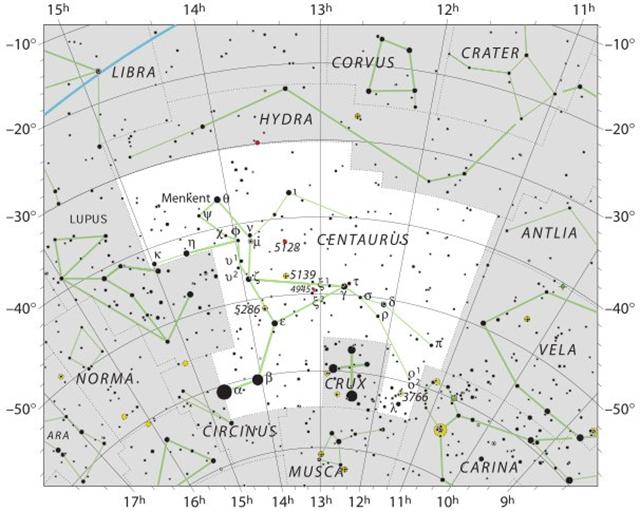We have to move on:
Viri in Kb1-14 is glyph 106, which can be compared with the manzil date 106 at Alterf 1, coinciding with Kb1-4. There are several stars both at this viri and at Rei in Kb1-11. There are no stars in the day before and after the Rei glyph. Neither are there any stars at manu kake (Kb1-7). Following the ecliptic path of Sun leads us downwards. Alkes (α Crateris) is at glyph 100, at the end of the hour of 'one left over' (eleven), i.e. of birth:
However, the new 1 (for counting once more to 10) is below the ecliptic and the 'door' (π) at viri to the great Centaurus constellation is even further down. We seem to be on our way to the south pole:
At my assumed precessional time for the rongorongo texts the star π Centauri was probably rising 172 days after equinox, i.e. 80 days after the solstice:
From Gregorian day 177 (= 6 * 29½) to Rei in Kb1-11 there were 72 (= 172 - 100) days:
I think one of the primary structural cues in the rongorongo texts is the viri type of glyph. With viri in Kb1-14 in position 106 we can guess a year with 365 days was due to begin with the heliacal rising of π Centauri, because 106 + 365 = 471 = 150% of 314. It indicates the beginning of the K text could coincide with Gregorian day 252 - 106 = 146 = 'May 26. This was the time of the heliacal rising of Ain (the Eye of the Bull, ε Tauri):
So viri may be the rongorongo equivalent of the Greek epsilon (ε) letter. |












